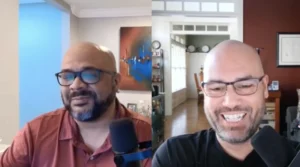Crypto Industry Reaches a Crossroad
With the recent FTX crisis, many larger issues within the crypto industry as a whole have been brought to light. There has been limited regulation that has allowed for a lack of disclosure and checks & balances within the system. With the collapse of FTX, the market currently looks unstable and insecure which may cause investors to walk unless changes can be made that create a level of integrity and consumer protection.
Gabriella Kusz, CEO of Global Digital Asset and Cryptocurrency Association, finds the silver lining answering the question of what comes next? How can other crypto currency exchanges and the wider blockchain and crypto industry prevent loss of customers amidst the ripple of collateral damage the FTX collapse has caused?
Gabriella’s Thoughts:
“So, the major flaws that we saw coming out of the FTX collapse have been around customer assets and full disclosure. So, understanding that customer assets are appropriately segregated and are not used by the corporate entity itself. Ensuring that we have strong governance and a system of checks and balances.
Again, you know, maintaining an active board, ensuring that you have internal controls, all of these will be extremely important to managing an appropriate exchange. Maintaining appropriate liquidity reserves so that you can disclose whether these are proprietary reserves in that you’ve put aside as a buffer to cover any losses of customer funds, but also around enterprise risk management and stress testing. I think lastly, what we’re seeing, especially coming out of the bankruptcy filings, is the importance of proper books and records, as well as the importance of an independent audit.
We have reason to believe that there is a silver lining to a lot of this. In terms of reassuring customers, I would say that you know at this point the crypto industry is coming around the Global Digital Asset and Cryptocurrency Association and our core principles, which are based on the six areas that I just outlined, in order to elaborate those and to move forward in pushing industry to attest to and to implement these types of procedures and actions.
It’s with this that we believe that we can enhance market integrity and also advance consumer protection, while at the same time fostering innovation and technological advancement.”









